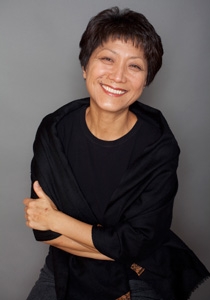Suntae Chun cannot forget. Or, rather, will not forget.
“June 24th was a Saturday,” Chun recalls without hesitation. “I was a member of the swimming team. So whole school went to picnic. Twenty-seven of us went to Ongmyon Reservoir … We spend evening swimming.” We see a black and white photo of a youthful Chun and his teammates languidly posing in their swim trunks. “Next morning,” however, “big war broke out.”
“And then,” Minyong Lee adds, “everything fell apart.”
That war, and the countless lives and families that fell apart as a result, is the focus of the documentary Memory of Forgotten War. Directed by award-winning filmmaker Deann Borshay Liem and professor emeritus at Boston College (and Borshay Liem’s brother-in-law) Ramsay Liem, Memory of Forgotten War features four elderly Korean American immigrants -- Chun, Lee, Hee Bok Kim, and Kee Park -- all of whom vividly remember a war officially designated in the U.S. as “forgotten.” Indeed, their harrowing stories of death, separation, persecution, and immigration tumble forth with startling clarity and tense emotion, offering an intimate look at a divided nation caught in the throes of a Cold War that never thawed, a Korean War that never ended.

Co-director Deann Borshay Liem.
Five years in the making, Memory of Forgotten War, which Borshay Liem describes as a “passion project,” and which Professor Liem calls an “anti-war film,” grew out of Still Present Pasts, a traveling multimedia exhibition based on oral histories of Korean War survivors. Curated by Professor Liem, Still Present Pasts itself grew out of an earlier oral history project started by some of his Korean American college students who were troubled by the North Korean famine of the late 1990s, yet lacked a historical context to critically understand the larger conditions of the famine. And Professor Liem’s interest in oral history grew out of his work with torture survivors from Latin America in the 1980s.
“In the course of working with them, I came to understand the difficulties of trauma survivors, particularly those whose tortures were under political conditions,” says Professor Liem. “I remember at one point talking with some Chilean psychologists, who had developed a form of therapy for torture survivors called testimony. I said to them, ‘One day I am going to explore the Korean War because in the same way that I learned from you that people who may want to speak but have difficulty speaking can only do it when there is a listener capable of listening to actually hear their stories.’” Thus, a direct line can be drawn between the legacy of Latin American Cold War testimonio and Korean American Cold War “han” -- loosely defined as a collective feeling of unspeakable suffering or sorrow.
As a work of, for, and by “han,” Memory of Forgotten War gives Korean Americans the space to speak that which is unspeakable. Chun, Lee, and Park all participated in Still Present Pasts, while Kim, who appeared on the April 2003 cover of KoreAm for her work with the Bus Riders Union in Los Angeles (and is affectionately known as “Grandma Kim”), attended the LA showing of Still Present Pasts and eventually became a part of the project. When Borshay Liem and Professor Liem decided to make a documentary to reach audiences that the exhibition could not, they selected the four elderly Korean Americans out of the more than dozen voices from the exhibition.
“I think we were just drawn to their stories because they were different but also shared some commonalities,” says Professor Liem. “They were incredibly fascinating and difficult histories. But they were also people who were quite willing to step further into the public.”
Indeed, their lives were indelibly marked by the turmoil that characterized twentieth century Korean history, which structures the film -- Japanese colonization, liberation and immediate division by the US along the 38th parallel, occupation by the Soviet Union in the north and the US in the south, the formation of separate and hostile states in 1948, conventional war in 1950, postwar devastation and immigration to the US. Korean War historians Bruce Cumings and Ji-Yeon Yuh provide a succinct historical context that the filmmakers deftly weave in conversation with the Korean American survivors whose voices bear testimony to the profound human toll wrought by these macrocosmic forces.
Chun, who hails from the border town of Kaesong, speaks of the intense US bombing campaign of North Korean-occupied Seoul, which included the first major use of napalm: “I still hear the sound … and then big clouds. Right after that … orange fire … blood here, shrapnel passing through my cheek.” Kim, who was born in Pyongyang, speaks of her anguish in refusing to leave the basement of her house because her children had the measles. Park goes to prison with her mother to find her disappeared father, but instead, finds piles of anonymous corpses. Lee, from Seoul, reveals that he had siblings who identified with the North’s communist ideology and moved there. Because of those family ties, South Korean police searched Lee’s house. “And since that,” Lee confesses, “I don’t want to reveal myself to anybody else … I want to conceal.”
Like in her previous films, Borshay Liem employs amazing archival footage from a variety of sources -- including the US military and John Ford’s 1951 propaganda film, This is Korea -- from before, during, and after the war. There are some rare, fascinating scenes, like Soviet troops marching into Pyongyang amidst cheering Koreans days after the liberation of Korea from colonial Japan, and footage of Korean citizens getting searched by South Korean police during the 1945-48 period of the US military occupation government, which targeted real and perceived leftists. The filmmakers’ aesthetic tactic to contrast mostly black-and-white footage of mid-century Korea, which situates the Korean War in the distant past, with stories vivdly told by Korean American survivors in the present moment, has a jarring effect. For these four survivors, and for survivors of their generation, the war is not something distant, but always present. And as we hear their stories and watch the footage, the Korean War seems very present as well.
For Borshay Liem, Memory of Forgotten War is not so much a departure from her previous films, which focused on her identity as a Korean American adoptee, but a shift in focus on a war that always hovered in the background of First Person Plural and In the Matter of Cha Jung Hee. “As an adoptee raised by an American family, I just didn’t know this history at all,” says Borshay Liem. “My dad was an avid home movie buff, and he got his first eight millimeter Bolex film camera in 1950 and started filming the Borshay family the same year that the Korean War started. And when you look at the footage there was this total absence of knowledge or interest in Korea. Korea wasn’t really important.”
“For me,” Borshay Liem continues, “understanding the Korean War is partly understanding my own history. As an adoptee, I feel like I’ve had to reconstruct my own history, and so understanding this part of history has been a process of reconciling my adoption and coming to terms with it in my own way and filling out the absence of history that was a void in my life.”
Memory of Forgotten War is incredibly powerful because the survivors have to negotiate their own "voids," or multiple levels of enforced amnesia -- the South Korean narrative of anti-Communism and red-baiting, the US narrative of the US-as-liberator and South Korea as the grateful ward (which erases any memory or agency of South Korean independence movements), and an unofficial Korean American narrative that absorbs both state narratives into the unstable position of immigrant life to create an enduring silence -- one that is quite common in many Korean American households.
“It would be great if the film can provide some encouragement and opportunities for Korean Americans to talk to each other intergenerationally,” says Borshay Liem. For younger Korean Americans who may have never heard their parents or grandparents talk about the Korean War, watching and hearing elderly Korean American immigrants speak openly and critically about the war will have an unsettling effect -- but an effect that will lead to what Borshay Liem and Professor Liem hope will be an open, honest dialogue about the enduring legacies of an unending war. For as Grandma Kim says at the end of the film, “Korean kimchee is delicious. Reading about how delicious the kimchee is does not matter. You have to eat it. You have to try it. You have to try it to know it.”
--
The world premiere of Memory of Forgotten War screens on March 18 at 6:30 pm at New People.
It will also screen at the Institute for the Critical Study of Society at the Niebyl-Proctor Marxist Library in Berkeley (6501 Telegraph Avenue) on March 24 at 10:30 am. There will be a Q&A with Borshay Liem and several scholars after the film, which will include a discussion of the current crisis on the Korean peninsula.
Check out of all of Hyphen's CAAMFest 2013 coverage.










Comments